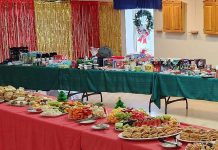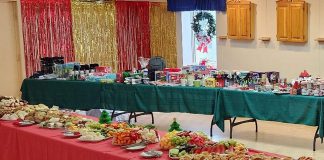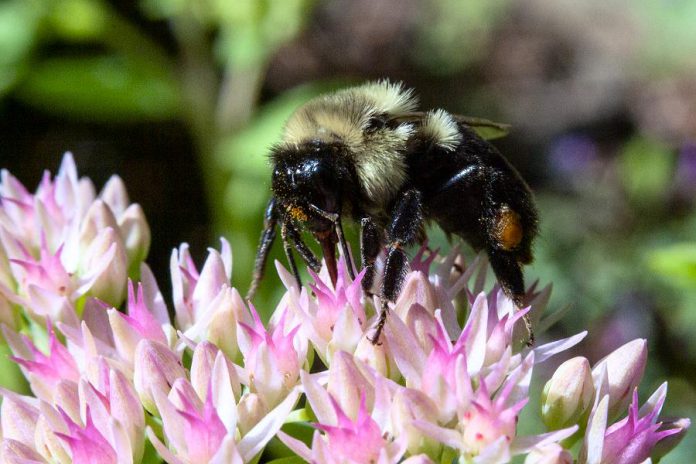
If you are privileged enough to have a yard or garden, you are probably eager to tidy it up now that spring is here.
It may be hard to wait, but treading lightly during early spring is a win-win.
“We should hold off on garden work until late April or early May, once temperatures are regularly above 10 to 15 degrees Celsius,” states Hayley Goodchild, sustainability and landscaping project Coordinator at GreenUP.
“There are two reasons for this,” she explains. “First, there are a lot of native pollinators and other beneficial wildlife sheltering under the leaf litter and other covered spaces of your garden — we want to protect them and not expose them to stress.”
“Second, soil tends to be very wet at this time of year. The structure of the soil can be very delicate. We do not want to compact the soil and make it difficult for roots and water to find their way into the soil.”
Native pollinators give us many gifts. They are essential not only to a vibrant garden but also to the health of the ecosystems we depend upon in Ontario.
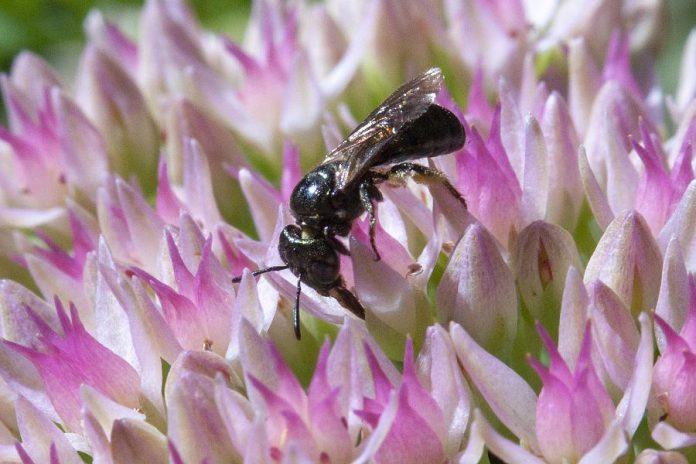
“Approximately one third of what we eat requires insect pollination,” explains Dr. Sheila Colla, who specializes in pollinator research and is an assistant professor in the Faculty of Environmental and Urban Change at York University (you can learn about her research at savethebumblebees.ca). “Pollinated foods tend to be the fruits and veggies that add vitamins and flavour to our meals.”
“People often think honeybees are the only important bee and thus think they are helping by having hives,” observes Colla. “In Canada, the most important pollinators are native bees and flies, not honeybees.”
Unlike native pollinators, domesticated honeybees were introduced to North America from Europe and Asia.
“We have over 800 species of bees in Canada with about 400 of them occurring in Ontario,” says Colla. “Other insects that visit flowers and move around pollen grains (pollinators) include butterflies, moths, wasps, beetles, and ants. These native insects have co-evolved with native plants and provide important ecosystem services which support other wildlife.”
“Many important Indigenous foods and medicines have co-evolved to be pollinated by specific native pollinators,” Colla adds. “Pollinators introduced from elsewhere can bring with them diseases our native pollinators have not been exposed to. Introduced pollinators can also disrupt those co-evolved pollination relationships and instead benefit weedy or invasive plant species.”
So what can we do to support the incredible diversity of native pollinators in Ontario?
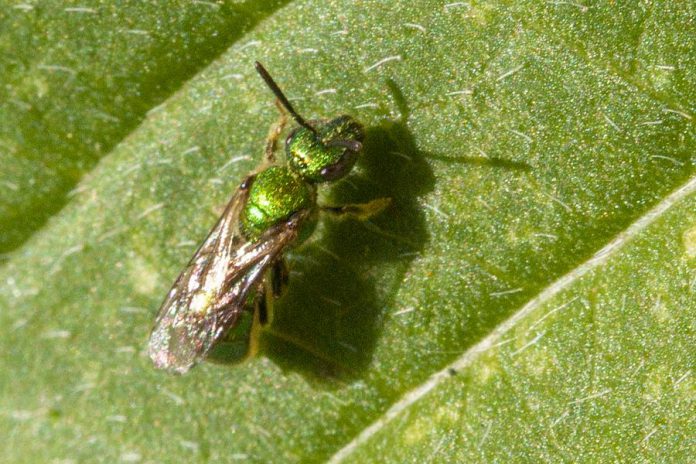
“The main threats to native pollinators are introduced disease from domesticated bees and climate change,” says Colla. “People can help by contributing photos to BumbleBeeWatch.org (a free phone app) and by spreading the word that we have lots of different bee species. Both of these actions are so important. Anyone can do these things and they are free.”
Another way to help native pollinators is to plant pollinator-friendly gardens.
“Native plants support native pollinators,” Colla explains. “Especially things that bloom early in the spring, like willows, and late in the fall, like goldenrod.”
You can also help by providing appropriate nesting habitat for native pollinators.
“Bees like to nest in old stems or in piles of rocks and old logs,” says Colla.
Leave stems uncut over the winter and into the spring, and ensure there are old logs and piles of rocks placed in your garden. These simple acts can help native pollinators who in turn provide essential gifts to our planet and our plates.

As you tread lightly in your garden this spring, keep an eye out for native pollinator activity.
“In spring, a bumblebee queen will come out of overwintering and search for a nest site to start a new colony,” Colla says. “A bumblebee queen is a large bee and you will see her flying low in zigzags while stopping to explore crevices.”
“Bumblebees are good pollinators of tomatoes because unlike honeybees they can buzz-pollinate and can forage in greenhouses. Unlike honeybees, which use the sun to navigate, bumblebees use landmarks on the ground to navigate.”
“Squash bees are ground-nesting bees that specialize in the pollination of squash plants. Squash bees tend to be early morning/dawn pollinators so people often miss them.”
If native pollinators are evading your gaze, Dawn Pond has some tips on how to be a pollinator detective. You may know Pond as the Downtown Vibrancy Manager with the Peterborough DBIA, and as the coordinator of several Depave Paradise projects with GreenUP. What you may not know is that Pond also has a background in pollinator and plant research.
“Look in hollow stems that have dried out over winter and are at least six inches long,” Pond says. “These stems can be suitable nesting locations for cavity-dwelling native bees. If the hollow centre of a stem is filled with bee cells (made of leaves and natural material) then it was home for new bees throughout the winter.”
“You can also look in the bare soil for evidence of wild bees,” Pond adds. “Ground-dwelling solitary bees emerge from their burrows as the weather warms up. Approximately 70 per cent of our native bee species in North America are ground dwelling.”
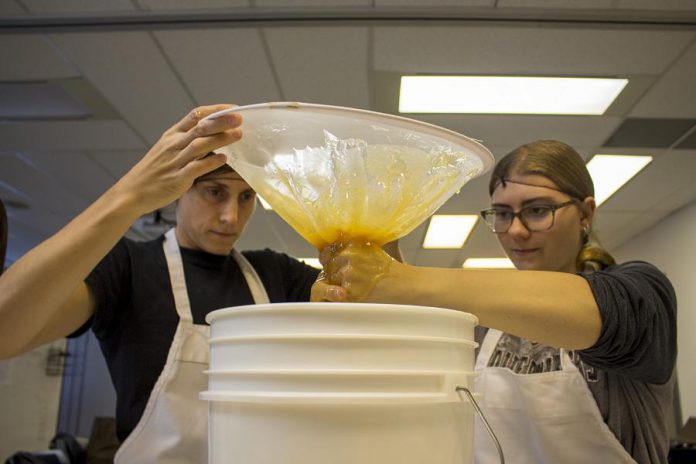
“The polyester bee (Colletes inaequalis) is a common native bee species in North America and one of the first to emerge each spring. This bee makes its nest in sandy, bare soil. If you are lucky, you will see tiny burrows where the bees have dug themselves out of the soil to pollinate your plants throughout the spring and summer.”
This spring, support native pollinators by treading lightly in your yard and garden. Celebrate by finding evidence of native pollinators in your area and sharing it with GreenUP on social media @PtboGreenUP.
If you are looking for some outdoor volunteer work this spring and summer, contact Peterborough Pollinators at ptbopollinators@gmail.com to help care for their pollinator gardens around the city.


